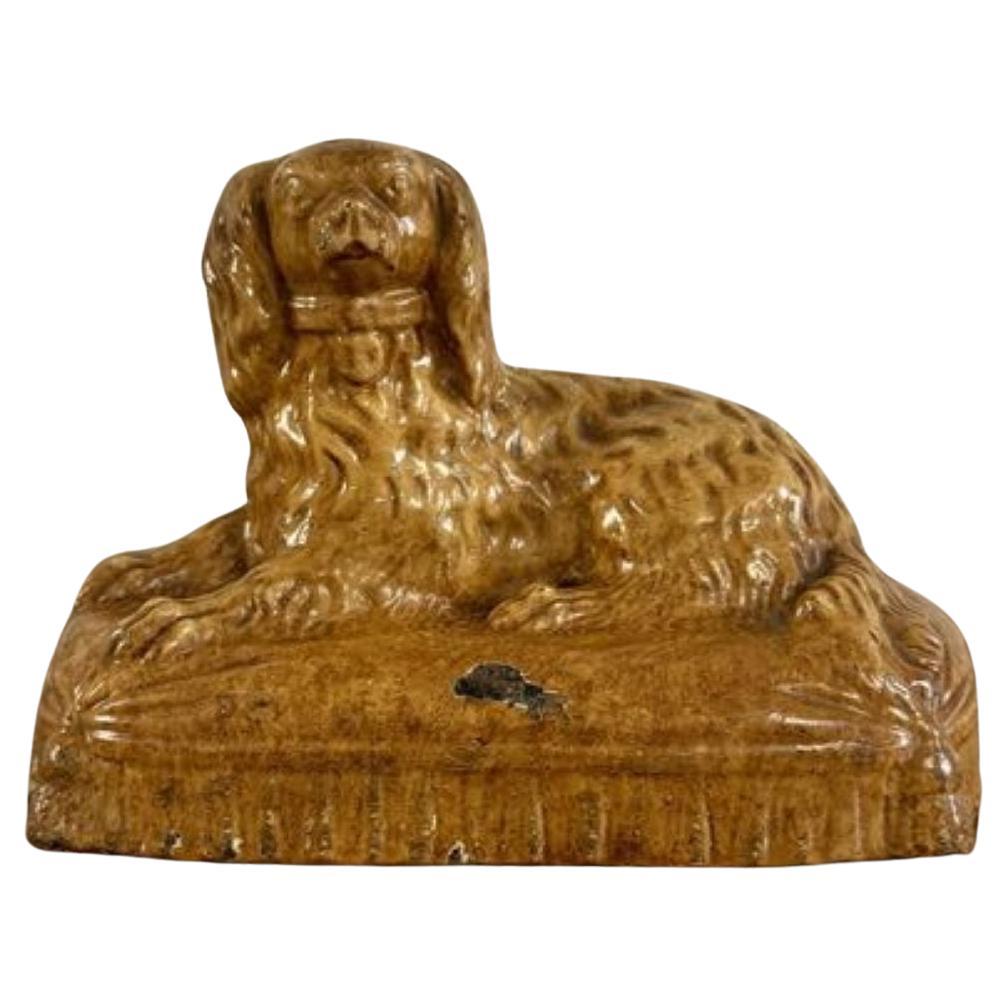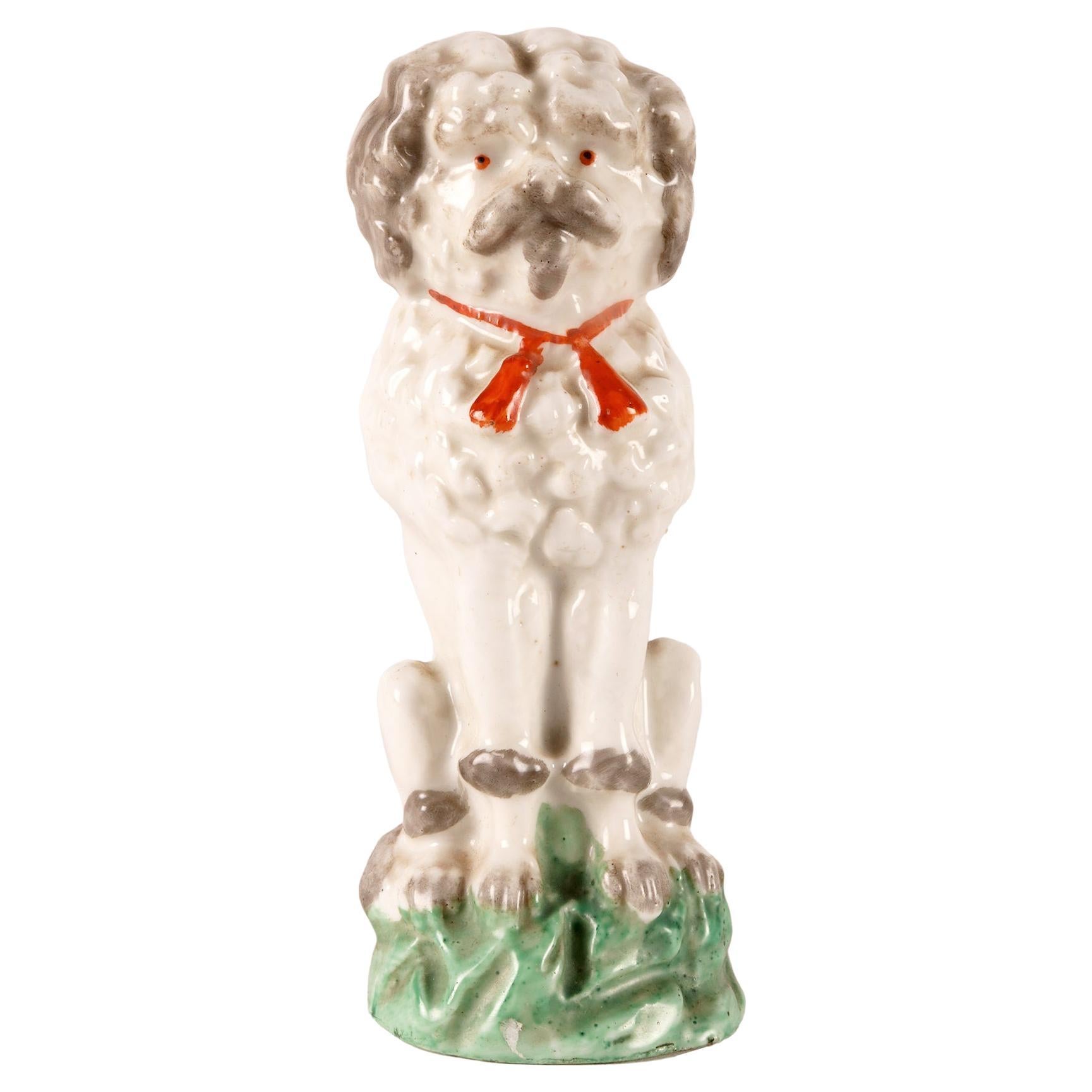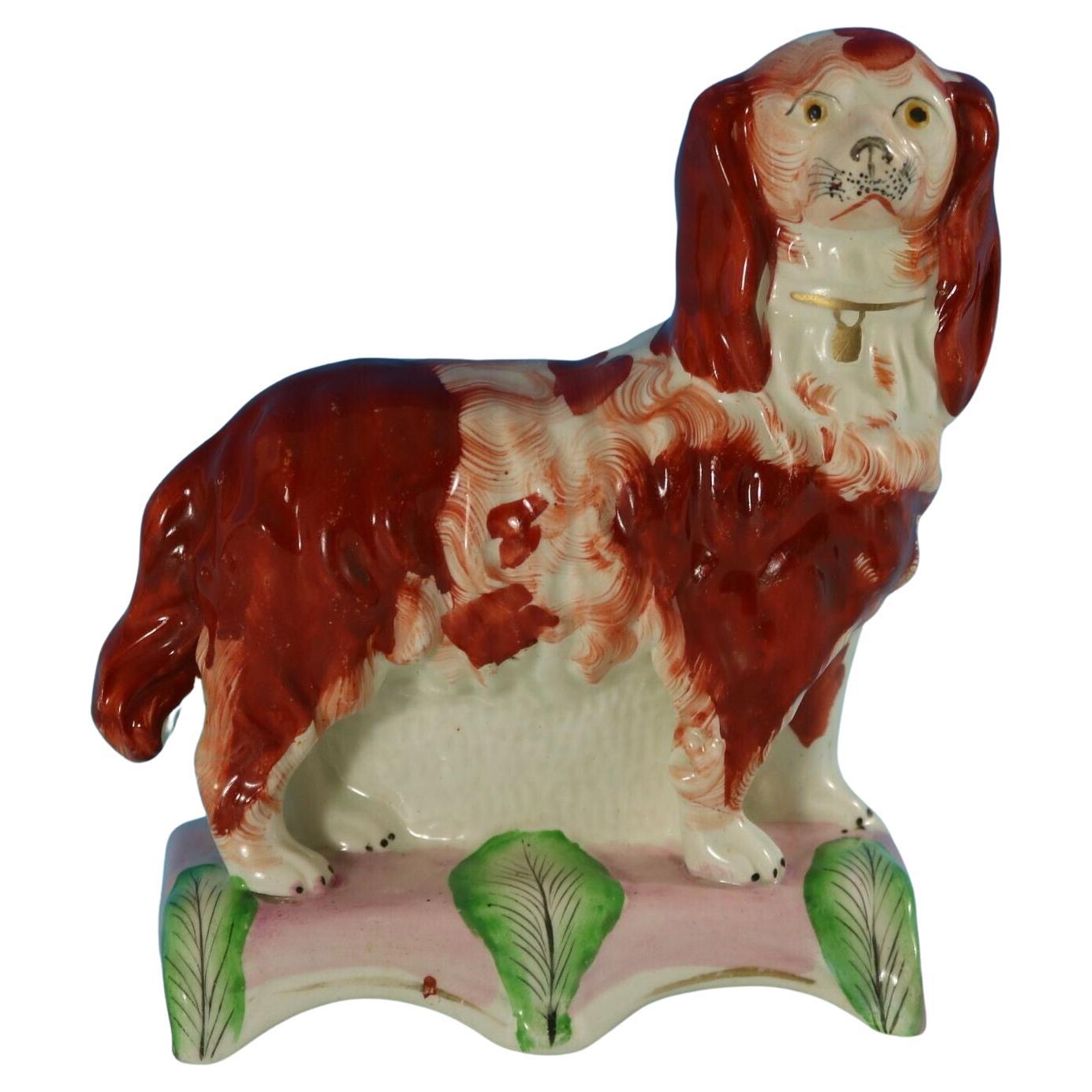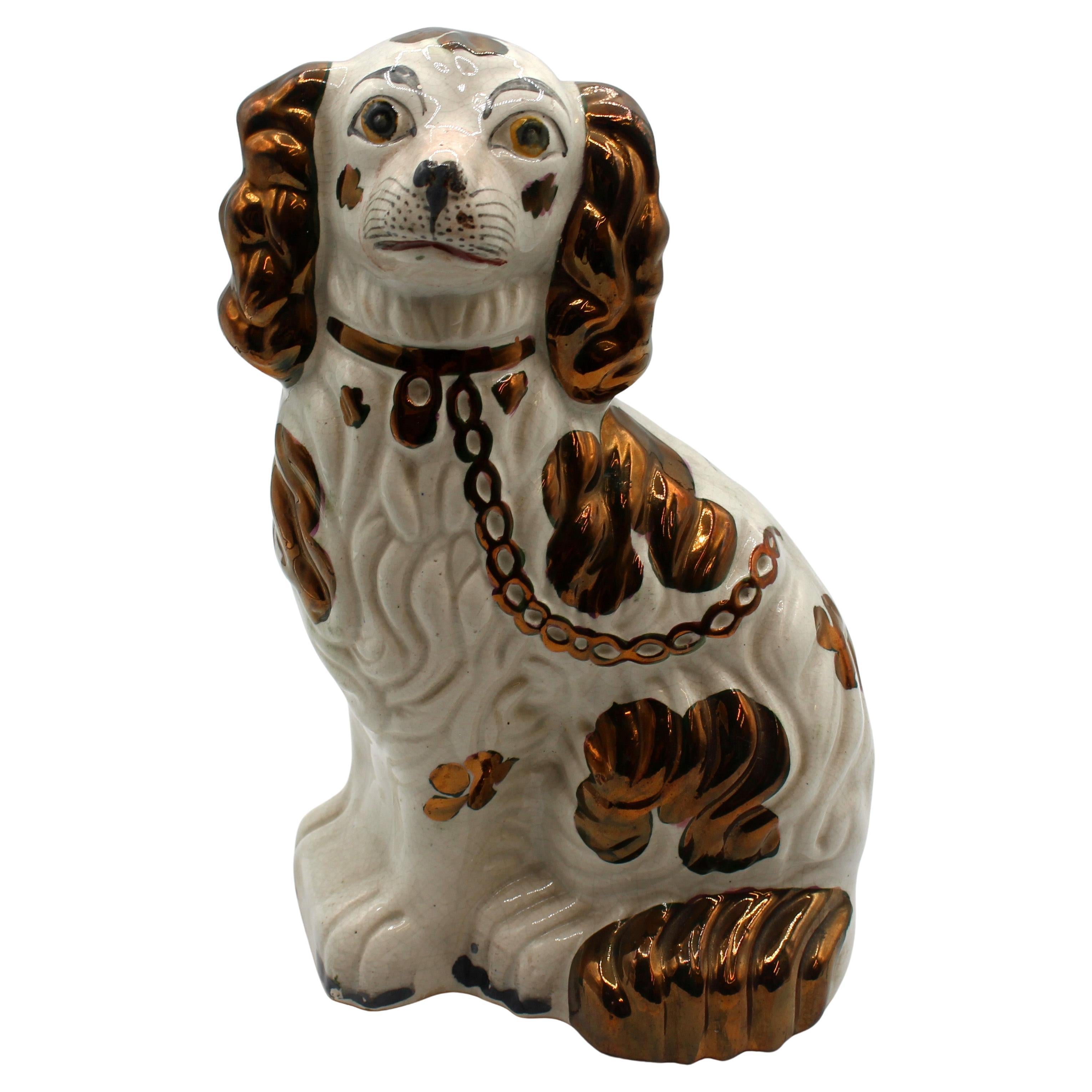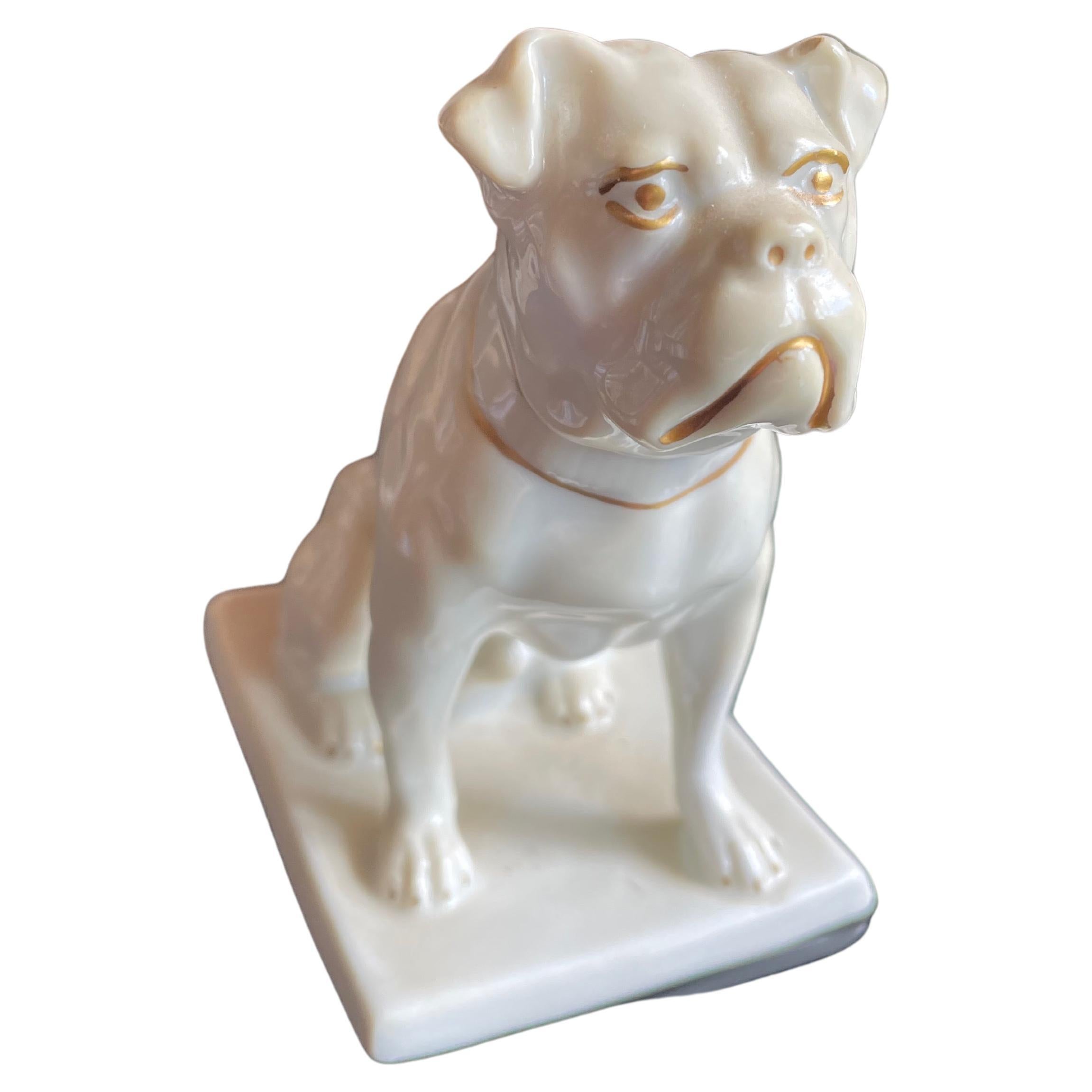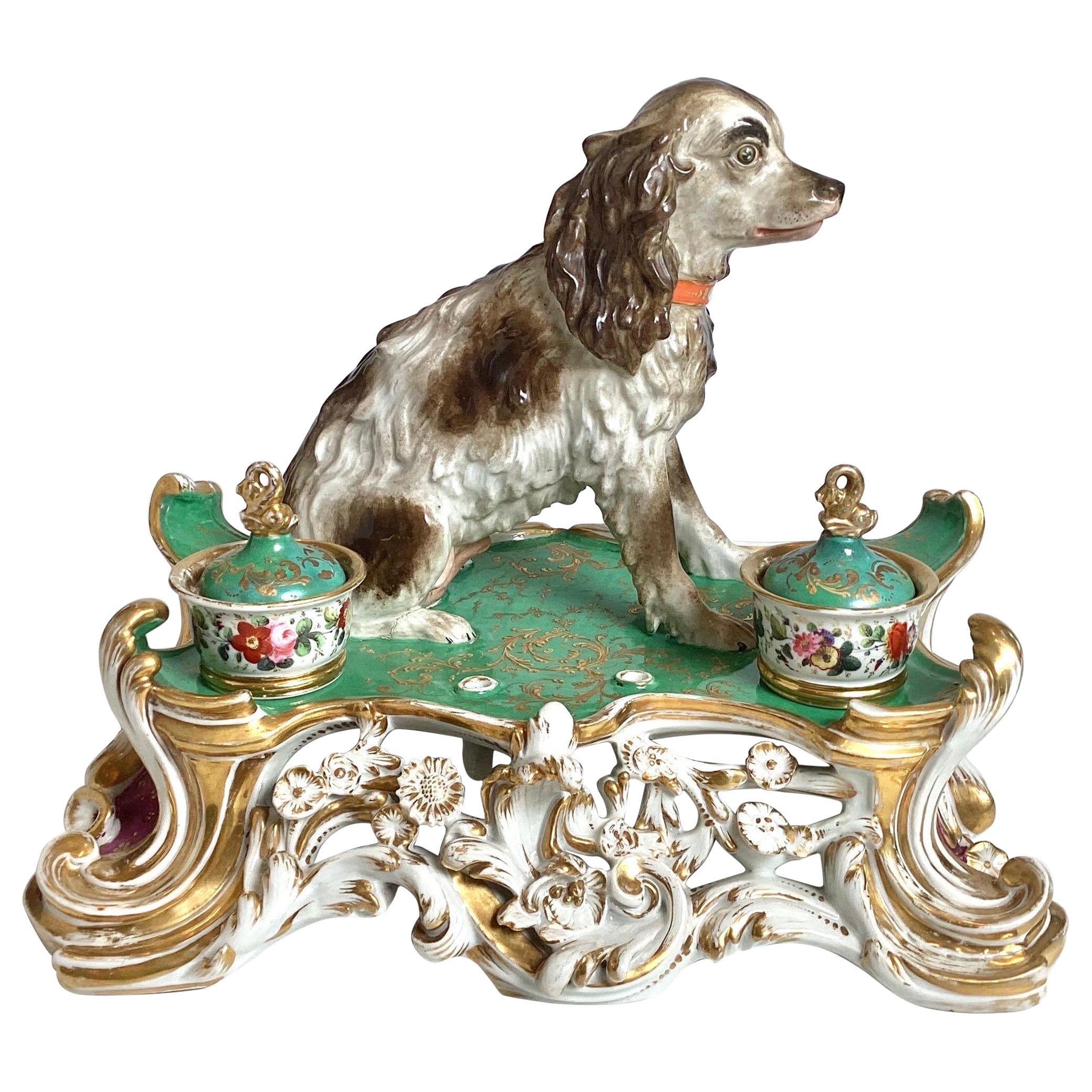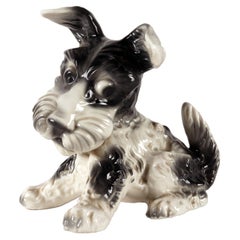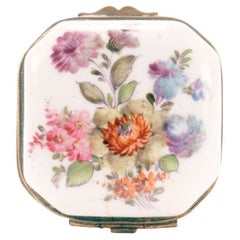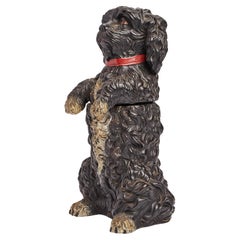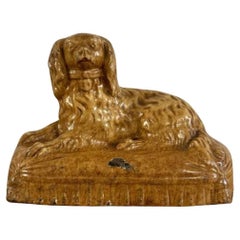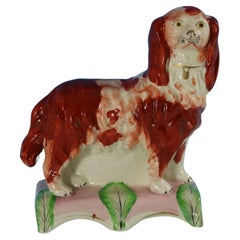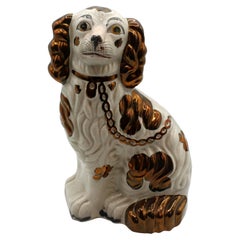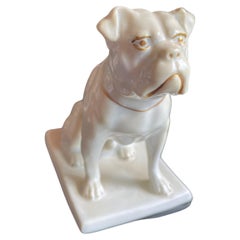Items Similar to King Charles Cavalier porcelain box, sitting on the books, England 1850.
Video Loading
Want more images or videos?
Request additional images or videos from the seller
1 of 11
King Charles Cavalier porcelain box, sitting on the books, England 1850.
$836.93
£619.58
€700
CA$1,158.10
A$1,276.78
CHF 667.97
MX$15,663.75
NOK 8,408.44
SEK 7,863.22
DKK 5,332.17
About the Item
Rectangular box in painted porcelain, in the shape of stacked books. The base and lid are supported. Above the first book at the top, in the shape of a lid, there is a sitting dog, a King Charles Cavalier, with a plumed hat and ruff. The entire box is decorated by hand painting on the outside. England second half of the 19th century.
- Dimensions:Height: 4 in (10.16 cm)Width: 2.5 in (6.35 cm)Depth: 1.75 in (4.45 cm)
- Materials and Techniques:
- Place of Origin:
- Period:
- Date of Manufacture:1850
- Condition:Wear consistent with age and use.
- Seller Location:Milan, IT
- Reference Number:1stDibs: LU917138543832
About the Seller
5.0
Vetted Professional Seller
Every seller passes strict standards for authenticity and reliability
Established in 1991
1stDibs seller since 2011
250 sales on 1stDibs
Typical response time: 2 hours
- ShippingRetrieving quote...Shipping from: Milan, Italy
- Return Policy
Authenticity Guarantee
In the unlikely event there’s an issue with an item’s authenticity, contact us within 1 year for a full refund. DetailsMoney-Back Guarantee
If your item is not as described, is damaged in transit, or does not arrive, contact us within 7 days for a full refund. Details24-Hour Cancellation
You have a 24-hour grace period in which to reconsider your purchase, with no questions asked.Vetted Professional Sellers
Our world-class sellers must adhere to strict standards for service and quality, maintaining the integrity of our listings.Price-Match Guarantee
If you find that a seller listed the same item for a lower price elsewhere, we’ll match it.Trusted Global Delivery
Our best-in-class carrier network provides specialized shipping options worldwide, including custom delivery.More From This Seller
View AllPorcelain sculpture of a Poodle dog, England 1900.
Located in Milan, IT
Painted porcelain sculpture depicting a Poodle dog sitting on the grass, with a red ribbon around its neck. England circa 1900.
Category
Early 20th Century English Porcelain
Materials
Porcelain
Porcelain sculpture of a Terrier dog, England Thuringia, Germany, 1940 - 1950.
Located in Milan, IT
Painted porcelain sculpture depicting a Terrier puppy dog in a sitting position. Porzellanfabrik Unterweißbach, Thuringia, Germany, 1940 - 1950.
Category
Mid-20th Century German Porcelain
Materials
Porcelain
Small painted porcelain box, octagonal shape, France 1840.
Located in Milan, IT
Painted porcelain box, octagonal shape.
The base and the lid are hinged by two gilt brass edges which have an interlocking hinge on the back, in correspondence with the opening eleme...
Category
Antique Mid-19th Century French Porcelain
Materials
Brass
A painted terracotta tobacco holder depicting a poodle dog, Austria 1880.
Located in Milan, IT
Painted terracotta sculpture, depicting a black poodle dog with a red collar, acting as a tobacco holder. Austria circa 1880.
Category
Antique Late 19th Century Austrian Animal Sculptures
Materials
Terracotta
Ceramic sculpture of an English Setter dog, England 1950.
Located in Milan, IT
Painted ceramic sculpture depicting an English Setter dog in a sitting position. England circa 1950.
Category
Mid-20th Century English Ceramics
Materials
Ceramic
Ceramic sculpture of a Dalmatian dog, England 1950.
Located in Milan, IT
Painted ceramic sculpture depicting a Dalmatian dog. England circa 1950.
Category
Mid-20th Century English Ceramics
Materials
Ceramic
You May Also Like
Unusual antique Victorian Staffordshire stoneware King Charles spaniel
Located in Ipswich, GB
Unusual antique Victorian Staffordshire stoneware King Charles spaniel, having a quality unusual Staffordshire stoneware figure of a King Charles spaniel, hand painted in a lovely sh...
Category
Antique Early 19th Century English Early Victorian Ceramics
Materials
Ceramic
Staffordshire King Charles Spaniel on Leaf Base
By Staffordshire
Located in Chelmsford, Essex
Staffordshire Pottery figure which features a King Charles spaniel, stood on a leaf embellished base. Dull gilt embellishment.
Category
Antique 1860s English Victorian Figurative Sculptures
Materials
Earthenware
C. 1860s-70s Copper Luster Staffordshire King Charles Spaniel
Located in Chapel Hill, NC
Circa 1860s-70s copper luster Staffordshire King Charles Spaniel, English. Well modelled. Copper luster in good condition - nice details with the collar & chain, etc.
6.25" x 3 7/8"...
Category
Antique Mid-19th Century English Victorian Porcelain
Materials
Porcelain
Art Déco porcelain figurine" Sitting bulldog" . Germany 1920s. Signed.
By Porzellanfabrik Fraureuth
Located in Köln, NW
Fine Art Déco porcelain figurine "Sitting bulldog" on plinth.
Germany 1920s
Design: Doris Adler
Manufacturer: Porcelain factory Fraureuth. Germany
Inscribed on the underside.
Cream ...
Category
Vintage 1920s German Art Deco Animal Sculptures
Materials
Porcelain
An Early 19th Century Paris Porcelain Inkstand
By Jacob Petite
Located in Lambertville, NJ
A whimsical porcelain inkstand attributed to Jacob Petit, born Jacob Mordecai, was a well-known and celebrated French manufacturer of porcelain in the 19th Century. The spaniel dog s...
Category
Antique Mid-19th Century French Rococo Inkwells
Materials
Porcelain
German Porcelain Figure of a Bulldog, Early 20th Century
Located in Savannah, GA
German Porcelain Figure of a Bulldog, Early 20th Century
Category
Early 20th Century German Animal Sculptures
Materials
Porcelain
More Ways To Browse
Antique Cavalier Furniture
Painted Book Stack
Saxony Porcelain
Sevres Bleu Celeste
Shaped Porcelain Dishes
Small Silver Cup
Vintage China Saucers
Vintage Noritake Noritake
Wild Strawberry
Antique Cherub Figurines
Antique Milk Creamers
Antique Porcelain Ornaments
Antique Portrait Plate
Chinese Export Armorial Plate
Dresden Blue
Haviland Limoges Set
Limoge China
Meissen Boy With Flowers
